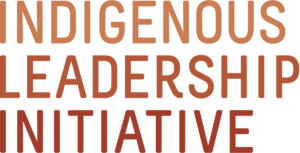Indigenous Conservation Is Central to Achieving Canada’s International Commitments
FEBRUARY 26, 2018 | INDIGENOUS LEADERSHIP INITIATIVE
Across the country, Indigenous governments are protecting ancient forests and clean waters. Indigenous Peoples have cared for these places for millennia, and now many Nations are developing innovative tools and models to conserve the land for future generations.
Indigenous conservation will take on even greater significance in the next two years. Canada has committed to protecting at least 17 percent of lands by 2020 as part of the Convention on Biological Diversity. So far, Canada has protected 10.6 percent of lands.
Canada can meet the 17 percent target with the help of Indigenous governments.
Many Indigenous communities have undertaken land use planning to identify areas they want to protect for the future, yet Canada doesn’t always count these designations toward its national goals. With greater recognition and added investment, Indigenous governments can protect more lands, and thereby help Canada achieve its international conservation commitments.
A Powerful Tool for Conservation
Many Indigenous governments are embracing land use planning as a tool for determining the future of their territories within a context of cultural responsibility. Through extensive community meetings, interviews and data analysis, communities identify which lands they want to protect and which lands should be open for exploration and development.
Along the Mackenzie River in the Northwest Territories, the Sahtu Dene and Metis designed a land use plan that honours cultural traditions, elders’ knowledge and Indigenous and western science. More than 700 people from Sahtu communities, government, industry and non-government organizations participated in the process. When it was finalized in 2013, communities proposed protecting Ts’ude niline Tu’eyeta, also known as Ramparts River National Wildlife Area, and as well as several other areas.
Indigenous land use plans provide welcome clarity. Industry interested in investing in projects know where development can proceed, and Crown governments can identify opportunities for collaboration.
Indigenous Protected Areas
Land use planning can inspire the creation of Indigenous protected areas, since conservation values are often the first to be considered within the planning process. Indigenous protected areas are places identified by Indigenous governments for protection, based on ecological and cultural values. They reflect Indigenous law and culture, and they help sustain fresh water, plentiful animals and a stable climate for all people. They ensure that Indigenous Peoples can maintain their relationship with those lands and take care of them for future generations of all people.
Indigenous protected areas can be created in collaboration with Crown governments, and they may be designated as national parks, tribal parks or wildlife areas. Regardless of the official name, a landscape becomes an Indigenous protected area based on the process through which it is created. In Indigenous protected areas, Indigenous governments play the primary role in identifying the lands for conservation, shaping the goals and managing the land.
For example, the Gwaii Haanas National Park Reserve and Haida Heritage Site off the coast of British Columbia was set in motion when the Haida Nation designated a stretch of old-growth forest and historic longhouses as a Haida Heritage Site. Today Gwaii Haanas is co-managed through a partnership between the Haida Nation and the Government of Canada. A group of Indigenous Guardians—the Haida Watchmen—act as stewards of the area, patrolling the coast and welcoming visitors to cultural sites.
Benefits for Local Economies
Several studies have found that parks and protected areas generate economic benefits. Every dollar that Canadian governments invest in parks boosts the GDP by $6 and visitors to national, provincial and territorial parks across the country spent $4.4 billion in 2009.
The process of managing protected areas also strengthens local economies. Many Indigenous protected areas are cared for by Indigenous guardians who monitor wildlife, watersheds and cultural sites. Researchers studied two guardian programs in the NWT—the NiHat’ni Dene and the Dehcho K’ehodi—and found they currently generate $2.50 in social, economic, cultural, and environmental value for every dollar invested. With further investment, these programs could generate more than $3.70 for every dollar spent.
Australia’s experience shows that sustained federal investment can generate even more benefits. Indigenous protected areas comprise almost half of Australia’s national reserves—75 dedicated areas covering more than 67 million hectares—and they employed about 2,600 Indigenous rangers in full-time or part-time jobs in 2016.
A recent study of five Indigenous protected areas found that $35.2 million in Australian government and other spending generated $96.5 million worth of social, economic, cultural and environmental benefits between 2009 and 2015.
A Path Toward Reconciliation
Honouring Indigenous aspirations for the land is an essential element of Reconciliation. The relationship with traditional territories rests at the core of Indigenous Nationhood and identity, and when Crown governments recognize this, it strengthens Nation-to-Nation relationships.
In the past, Indigenous Peoples were often displaced to create parks and were excluded from decision-making around park management. Now, Indigenous-led models can and must be the future of conservation in Canada. By supporting Indigenous protected areas and recognizing the contribution Indigenous Peoples make to Canada’s goals, Crown governments can build better partnerships.
Reconciliation happens on the land, and Indigenous protected areas help it take root. They foster renewed relationships with Crown governments, Canadians and the land.

